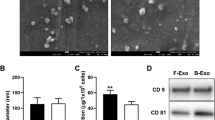Abstract
There is recent evidence that natriuretic peptides are important regulators of bone and cartilage, although they were originally identified as the cardiac hormones causing natriuresis and hypotension. Three members of natriuretic peptide family are known: atrial natriuretic peptide (ANP), brain natriuretic peptide (BNP), and C-type natriuretic peptide (CNP). The biologically active receptors for these peptides are particulate guanylate cyclases; the two known types are GC-A and GC-B. ANP and BNP have high affinities for GC-A, and CNP is the preferred ligand for GC-B. In this paper we report the results of our study of the expression and possible role(s) of natriuretic peptides in the ROB-C26 cell, which is an osteogenic cell line with multiple potentials for differentiating into myoblast, osteoblast, and adipocyte. ROB-C26 cells produced cGMP in response to natriuretic peptides at both their basal state and after enhanced differentiation into osteoblast which was induced by bone morphogenetic protein [(BMP)-2]. CNP was far more potent than ANP in cGMP production. In contrast, enhanced differentiation into adipocyte by dexamethasone resulted in the marked decrease in their responsiveness to natriuretic peptides. Although the messages for GC-A and GC-B were demonstrated by Northern blot analysis at both the basal stage and after BMP treatment, they were down-regulated after dexamethasone treatment. The presence of CNP was shown by RT-PCR and immunohistochemistry in ROB-C26 cells. C3H10T1/2, which is another and more primitive mesenchymal cell line, also produced cGMP in response to CNP, and less potently to ANP. Culturing ROB-C26 cells with CNP or 8-bromo cGMP decreased [3H]thymidine uptake and slightly increased the message for alkaline phosphatase, which is a marker for osteoblast differentiation. These results suggest that the CNP/GC-B system is preferentially expressed in the cells of osteogenic lineage and their expression is down-regulated with differentiation into adipocyte lineage. The CNP/GC-B system is likely to be an autocrine/paracrine regulator of osteoblast growth and differentiation.
Similar content being viewed by others
Author information
Authors and Affiliations
Additional information
Received: 5 October 1998 / Accepted: 10 April 1999
Rights and permissions
About this article
Cite this article
Suda, M., Komatsu, Y., Tanaka, K. et al. C-Type Natriuretic Peptide/Guanylate Cyclase B System in Rat Osteogenic ROB-C26 Cells and its Down-Regulation by Dexamethazone. Calcif Tissue Int 65, 472–478 (1999). https://doi.org/10.1007/s002239900735
Published:
Issue Date:
DOI: https://doi.org/10.1007/s002239900735




